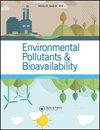伊朗西部不同土地利用方式下钙质土壤碳的分布
Q3 Chemical Engineering
引用次数: 4
摘要
生态系统中天然稳定碳和不稳定碳的浓度已被广泛用于帮助理解广泛的土壤过程和功能。本研究旨在探讨土地利用变化对伊朗西部钙质土壤不同碳组分(F1、F2、F3和F4)、高锰酸盐可氧化碳(POXC)、土壤有机碳(SOC)和总有机碳(TOC)的影响。选定地点的四种常用土地利用方式包括天然林、牧场、旱地耕作和灌溉耕作系统,作为土壤采样的基础。结果表明,土地利用转换与土壤有机碳储量变化之间存在较强的相关性。林地块状表层土壤(0 ~ 15 cm) CaCO3含量均值最大,CaCO3均值最小。与其他土地利用方式相比,旱地耕作的主动和被动碳库都最少。土壤有机碳(SOC)、总碳(Total C)和POXC (POXC)含量与不同组分的碳含量呈显著正相关。考虑到C和POXC库,得到的土壤C比只测量总C更明确。土地利用变化对总体土壤碳储量的影响可能有助于未来农民和决策者做出管理决策,从而提高伊朗西部地区碳固存的潜力。本文章由计算机程序翻译,如有差异,请以英文原文为准。
Distributions of carbon in calcareous soils under different land uses in western Iran
Abstract Concentrations of Natural stable and unstable carbon in ecosystems have been used extensively to help to understand a wide range of soil processes and functions. This study was conducted to explore the effects of land use changes on different carbon fractions (F1, F2, F3 and F4), permanganate oxidizable carbon (POXC), soil organic carbon (SOC) and total organic carbon (TOC) associated with soils in calcareous soils of western Iran. Four popular land uses in the selected site including natural forest, range land, dryland farming and irrigated farming systems were employed as the basis of soil sampling. The results showed a strong relationship between land use conversion and SOC stocks changes. The greatest mean values for carbon content and the least mean values of CaCO3 in bulk topsoil (0–15 cm) in the forest land were observed. Dryland farming had the least both active and passive pools of C in comparison with the other land uses. The positive and significant correlations was observed between SOC, Total C and POXC contents and different C fractions. Taking C and POXC pools into account, a more definitive picture of the soil C is obtained than when only total C is measured. The influence of land use changes on overall soil carbon stocks could be helpful for making management decision for farmers and policy makers in the future, for enhancing the potential of C sequestration in western Iran.
求助全文
通过发布文献求助,成功后即可免费获取论文全文。
去求助
来源期刊
CiteScore
1.62
自引率
0.00%
发文量
0
审稿时长
1 months
期刊介绍:
Chemical Speciation & Bioavailability ( CS&B) is a scholarly, peer-reviewed forum for insights on the chemical aspects of occurrence, distribution, transport, transformation, transfer, fate, and effects of substances in the environment and biota, and their impacts on the uptake of the substances by living organisms. Substances of interests include both beneficial and toxic ones, especially nutrients, heavy metals, persistent organic pollutants, and emerging contaminants, such as engineered nanomaterials, as well as pharmaceuticals and personal-care products as pollutants. It is the aim of this Journal to develop an international community of experienced colleagues to promote the research, discussion, review, and spread of information on chemical speciation and bioavailability, which is a topic of interest to researchers in many disciplines, including environmental, chemical, biological, food, medical, toxicology, and health sciences.
Key themes in the scope of the Journal include, but are not limited to, the following “6Ms”:
Methods for speciation analysis and the evaluation of bioavailability, especially the development, validation, and application of novel methods and techniques.
Media that sustain the processes of release, distribution, transformation, and transfer of chemical speciation; of particular interest are emerging contaminants, such as engineered nanomaterials, pharmaceuticals, and personal-care products.
Mobility of substance species in environment and biota, either spatially or temporally.
Matters that influence the chemical speciation and bioavailability, mainly environmentally relevant conditions.
Mechanisms that govern the transport, transformation, transfer, and fate of chemical speciation in the environment, and the biouptake of substances.
Models for the simulation of chemical speciation and bioavailability, and for the prediction of toxicity.
Chemical Speciation & Bioavailability is a fully open access journal. This means all submitted articles will, if accepted, be available for anyone to read, anywhere, at any time. immediately on publication. There are no charges for submission to this journal.

 求助内容:
求助内容: 应助结果提醒方式:
应助结果提醒方式:


